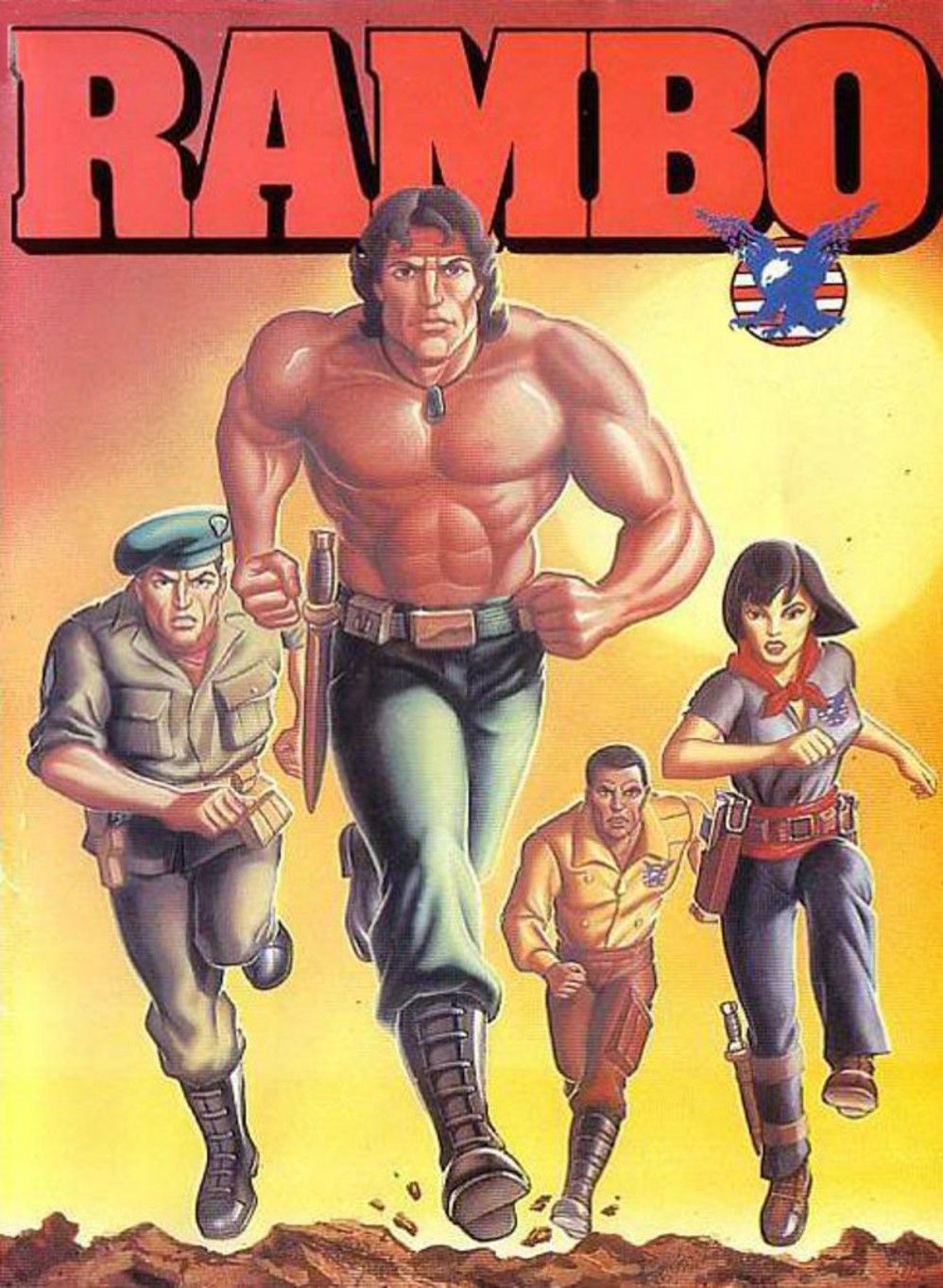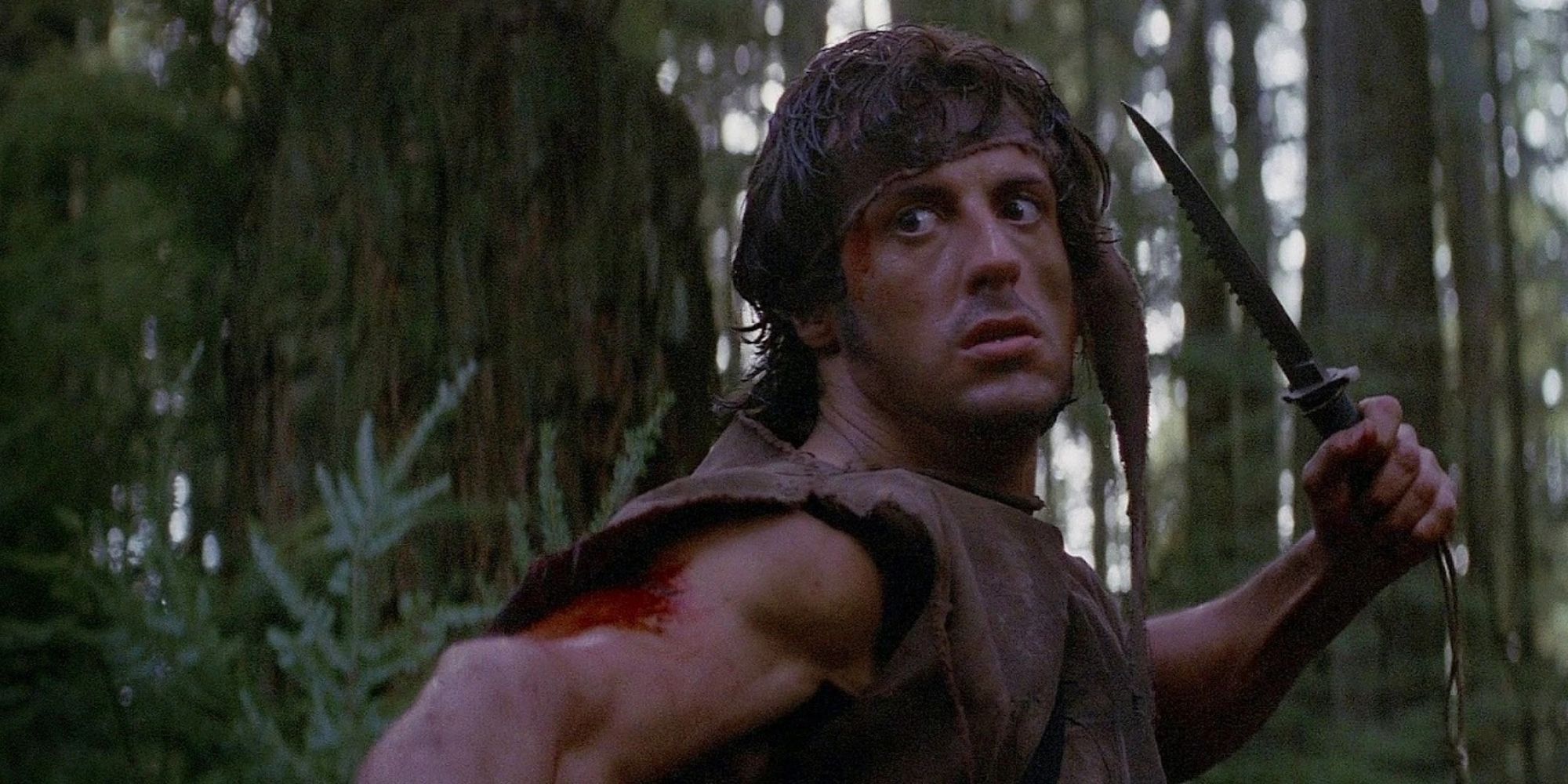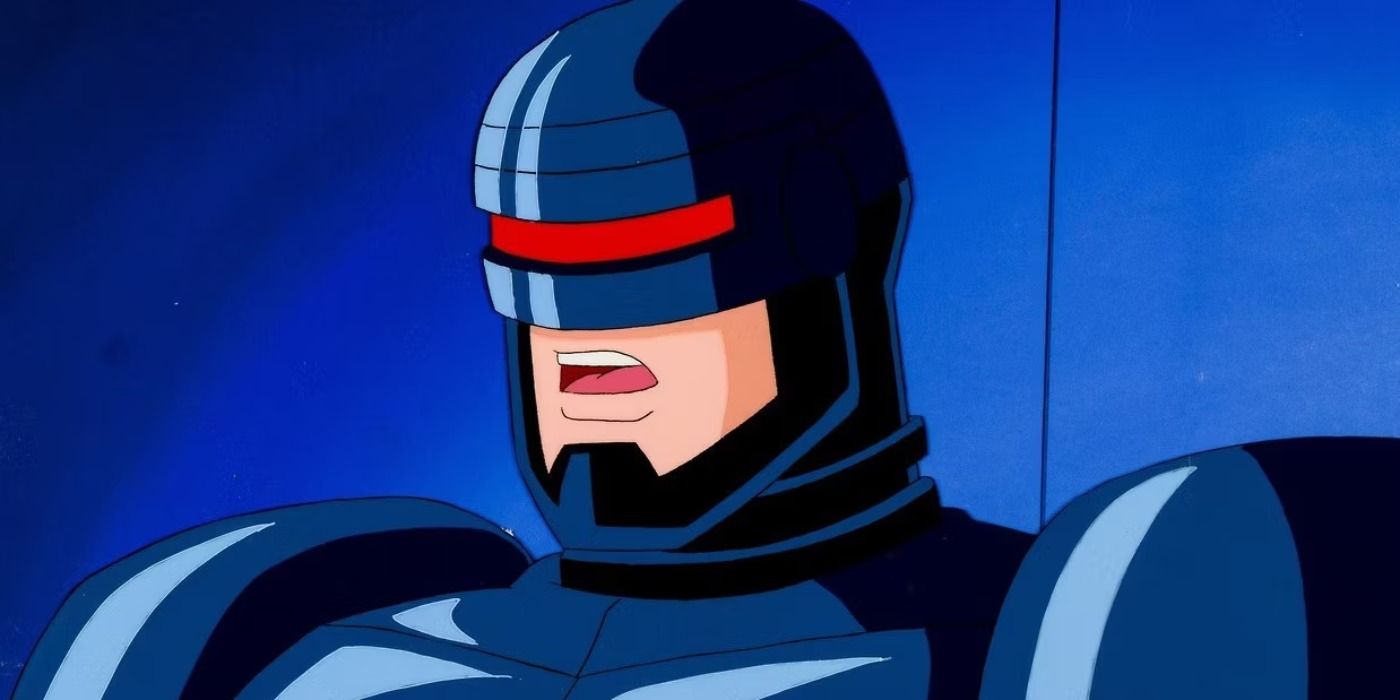The Big Picture
- Ultra-violent ’80s franchises like
Rambo
were surprisingly successful among young audiences. -
G.I. Joe
heavily focused on military themes and inspired other cartoons like
Rambo: The Force of Freedom
. - The message of
First Blood
is anti-war and does not align with the action-hero image associated with John Rambo.
What are some of the first things that come to mind when you think of “kid-friendly entertainment”? Does this list include machine guns, blood, sweat, and John Rambo (Sylvester Stallone)? If not, you must not have been born in the ’80s, as the ultra-violent Rambo franchise became surprisingly successful and lucrative among audiences.
An unflinching sense of patriotism was ever-present in the Reagan-era 1980s, and that tended to shine through within media directed towards children. The massively popular G.I. Joe franchise heavily focuses on characters involved in a fictional military branch based on the United States Armed Forces. While there’s certainly an argument to be made that the original G.I. Joe cartoon encouraged an unrealistic depiction of military service, the numerous conflicts between G.I. Joe and C.O.B.R.A. aren’t realistic, to begin with. The Rambo IP is rooted in grit and criticism of real-life warfare, so the attempts to make the title character a family-friendly face are quite unusual.

Rambo: The Force of Freedom
On Colonel Trautman’s request, John Rambo leads the special unit The Force of Freedom against paramilitary terrorist organization S.A.V.A.G.E. (Specialist-Administrators of Vengeance, Anarchy, and Global Extortion) all over the globe.
- Release Date
- April 14, 1986
- Cast
- Neil Ross , Alan Oppenheimer , Mona Marshall , James Avery , Don LaFontaine , Michael Ansara , Peter Cullen , Lennie Weinrib
- Seasons
- 1
‘Rambo: The Force of Freedom’ is a Direct Rip-Off of ‘G.I. Joe’
Before becoming a hit animated series in 1985, G.I. Joe was a ludicrously successful collection of toys and action figures. Of course, these were initially targeted toward children, and thus most action figures were based on child-friendly IPs. Action figures are far from extinct, but in a modern age that is becoming more and more dominated by digital entertainment, they’ve become closer to collector’s items for hardcore fans and adults.
The clear pattern of marketability of the G.I. Joe IP ensured the animated show’s production, much like how their sister Hasbro property, Transformers, found its way on television sets around the globe. Every week, America’s finest heroes would go toe-to-toe with the infamous terrorist organization C.O.B.R.A. Despite only being on the air for about a year, it inspired a ton of toy sales.
Intentional or not, it’s clear that other parties wanted to capitalize on the widespread success of G.I. Joe and fast. One such party was the people behind 1982’s First Blood and 1985’s Rambo: First Blood Part which had become wildly successful. Part II in particular gave this new franchise some viability for multimedia content. Despite both films having an R-rating for severe violence, that didn’t stop anyone from thinking it was a good idea to turn it into a TV-Y7-rated cartoon show.
Thus, Rambo: The Force of Freedom was born, and released a mere year after the original G.I. Joe series. The blatant similarities between the two are wildly apparent, with similar animation styles, a flashy theme song, and original characters primed for action figure sales. The show also managed to recruit several members of voice-acting royalty for the show, including Teenage Mutant Ninja Turtles star James Avery and even Optimus Prime and Megatron themselves, Peter Cullen and Frank Welker. There’s even an evil acronym organization called S.A.V.A.G.E., probably because one called P.Y.T.H.O.N. would have been just too on the nose.
1:48

Rambo Is Based on a Real-Life World War II Veteran
‘First Blood’s dark tone held more truth than you realize.
‘Rambo: The Force of Freedom’ Fundamentally Misunderstood the Message of ‘First Blood’
As ludicrous a concept of turning John Rambo into the star of a family-friendly cartoon show is, it worked. The massive marketing combined with the show’s success helped contribute to the character’s popularity in the 1980s. While we can agree that the character of John Rambo should be in the minds of followers of American pop culture, how society seems to remember John Rambo is counter-intuitive to what he’s meant to be. Most seem to remember Rambo as the poster child for the infallible action hero who blows things up first and asks questions later, but that’s not his original purpose.
1982’s First Blood is not an action movie. Sure, it has plenty of action and legendary action star Sylvester Stallone, but it’s a gritty post-war drama. Despite serving his country and winning the Congressional Medal of Honor for his bravery in one of the deadliest conflicts in U.S. history, Rambo is treated as if he’s a freeloading bum. It’s a tragic tale of a mentally scarred person who is pushed to the edge by a government that has no regard and respect for his service.
In short, not only is First Bloodnot an action film, it’s an aggressively anti-war film. It heavily criticizes the Vietnam War and the aftermath of the conflict, in the same way that Godzilla: Minus One is a commentary on the horrific environment created by World War II. “Patriotic” shouldn’t be the word that comes to mind when it comes to First Blood, and yet, thanks to First Blood Part II and to a lesser extent Rambo: The Force of Freedom, Rambo is now universally considered a patriotic action icon.
Rambo Isn’t the Only Character To Be Turned Into a Children’s Cartoon
Rambo: The Force of Freedom is a strange beast. However, it’s only one entry in a bizarre trend of films turned into animated kids’ shows. For example, there were not one, but two animated RoboCop shows that turned Paul Verhoven‘s 1987 controversial satire of a brutal and dystopian future of Detroit into a semi-generic superhero landscape and even employed Inspector-Gadget-like devices in a blatant attempt to anchor it to a younger audience.
It’s not just action movies that got the animated cartoon treatment either. Some raunchier PG-13 comedies also had their risqué characters toned down for a children’s environment, including Beetlejuice, Ace Ventura: Pet Detective, and Dumb and Dumber. These programs didn’t have nearly the effect the feature films did, but they did miss the point and purpose of the source material.


